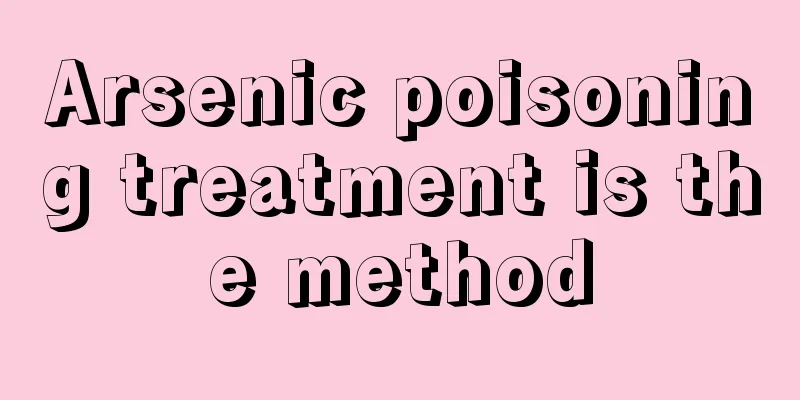Arsenic poisoning treatment is the method

|
In case of poisoning, you must pay attention to correct treatment and handling to avoid threatening your life. When treating, you must pay attention to scientific medication. For patients with severe abdominal pain, you can inject atropine or add pethidine. 1. Patients with acute oral poisoning should induce vomiting as soon as possible, or wash the stomach with warm water, saline or 1% sodium bicarbonate solution, and then immediately take freshly prepared ferric hydroxide (12% ferrous sulfate solution and 20% magnesium oxide suspension, mix equal amounts before use and shake well before use) to form insoluble ferric arsenate with arsenic, and then give sodium sulfate or magnesium sulfate as a catharsis. You can also inject 30g of activated carbon, 20-40g of magnesium oxide or egg white water (mix 4 egg whites with about 200ml of water) after gastric lavage. 2. There is an effective antidote for acute arsenic poisoning. Sodium dimercaptopropane sulfonate 5 mg/kg, intramuscularly or intravenously; the first dose of sodium dimercaptobutane 2g, dissolved in 10-20 ml of normal saline and injected intravenously, the course of treatment is 3-5 days. Penicillamine also has a certain effect in removing arsenic and should be used as early as possible (dosage, method, etc. follow the doctor's instructions). 3. Symptomatic and supportive treatment: For severe abdominal pain, intramuscular injection of atropine or pethidine can be used; for muscle spasm pain, calcium gluconate can be slowly injected intravenously. Supplement vitamin B, vitamin C, and vitamin K, and pay attention to preventing, treating and correcting dehydration, electrolyte imbalance and shock. Severely ill patients should undergo hemodialysis as soon as possible, which can effectively remove arsenic from the blood and prevent and treat acute renal failure. 4. Patients poisoned by hydrogen arsenide should receive oxygen inhalation and intravenous drip of 400-600 mg of hydrocortisone or 10-20 mg of methylprednisolone to inhibit hemolytic reaction. If hemoglobin drops to 5g, blood transfusion should be given. 5. Chronic arsenic poisoning can be treated with 10% sodium thiosulfate intravenous injection to assist renal excretion. Skin or mucous membrane lesions can be applied topically with 2.5% dimercaprol ointment or dexamethasone ointment. When multiple peripheral neuropathy occurs, symptomatic treatment is given. |
<<: How does Albizia Julibrissin treat insomnia? Is it effective?
>>: What are the treatments for lumbar bone hyperplasia
Recommend
Chinese medicine health food therapy that can be used by patients with gastric cancer
Gastric cancer patients, whether before or after ...
Can gastritis drink corn porridge?
Nowadays, more and more people are suffering from...
What are some tips to prevent your eyelids from twitching?
The eyes are the part of the body that best expre...
Is it serious to diagnose nasopharyngeal carcinoma
Is a diagnosis of nasopharyngeal cancer serious? ...
Onion is a simple and healthier way to treat insomnia
Many urban residents or middle-aged and elderly p...
What part of the body does acne on the face represent?
Traditional Chinese medicine believes that diseas...
How to soak Cassia seeds in water
Drinking Cassia seeds soaked in water is very eff...
How to deal with venous bleeding in an emergency
Venous bleeding means that the blood flowing out ...
Is it necessary to do non-invasive surgery for twins
Pregnant women have to bear a certain risk factor...
How effective is persimmon leaf in removing spots
As women grow older, various spots will appear on...
How to speed up the period at full term?
When the pregnancy reaches full term, you may fac...
Clove's efficacy, effects and contraindications
Speaking of lilac, everyone will think of the son...
What diseases does the cervical cancer vaccine prevent
Cervical cancer vaccines mainly prevent human pap...
What are the drugs for advanced brain cancer
At present in our country, due to the continuous ...
Early screening process for gastric cancer
Currently, there is no simple and effective diagn...









